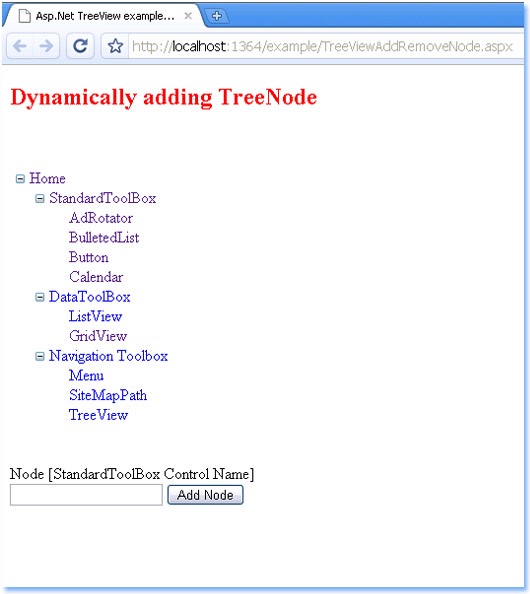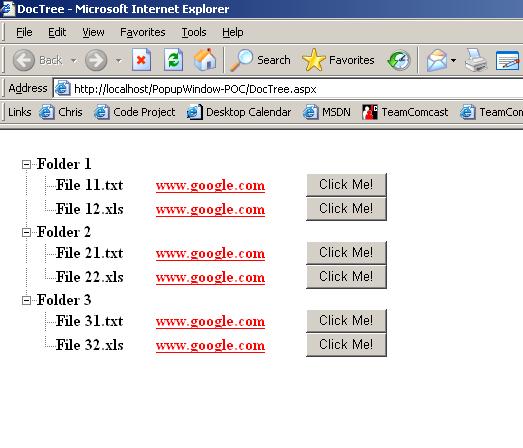
TreeView1.DataSource = new HierarchicalDataSet(dataSet, "ID", "ParentID") And even with your suggestion of XmlDataSource, you can not do that, putting the data in xml format is not enough to have the parent-child relationship. As I said in the beginning there is no easy direct way to do this without doing extra coding.
#Asp.net treeview code#
The method presented in my article is much easier, I would rather write one line of code than to do what the article you mentioned is doing handle events and for each TreeView control you add, there is just too much housekeeping compared with what I presented. And I would never have had the inspiration if not for this article. Not nesisarily a BETTER soloution - but I got it going. I now load the dataset from the DB and using a recursive call to a method that uses the same principle as your "public IEnumerator GetEnumerator()" I generate a string of "Hierachical" XMLįrom there its just a case of setting an "XMLDataSource.Data = xmlString" and then binding the treeView to that XMLDataSource. I had to create a new project and start adding the files in manually to get it going - which might be why it works for you and not me!Īs it stands I gave up and found an alternative solution.
#Asp.net treeview download#
If I download the code sample provided and try and open the project file VS returns an error "not supported by this instalation". I suspect it may be something with my set up. However this threw up more porblems (expectedly) with errors of "No row at position 0" when reaching the last child in the datasource (be it my database or your hard coded sample) I did spend quite a bit of time debugging this before I posted - figued I could fix it on my own but I was wrongįound that by eliminating the 'RowFilter=""' statements that I escaped the infinite loop - which was nice! Here is a quick example for some records to see how they will present the child parent relationship: Here is how such a table would look like:

Creating this structure in a database involves having a table reference itself to implement the parent-child relationship. You have nodes, and under some nodes, you have children. The class HierarchicalDataSet presents data in a hierarchy, which means supports Parent-Child relationships, just like the nature of a TreeView control. So, this article presents to you a small class that will take a DataSet as an input and return an object that implements IHierarchicalDataSource so that the TreeView can easily bind with your DataSets. The key to this solution is that the TreeView can bind to any object implementing the interface IHierarchicalDataSource. I have seen a lot of developers do this the old fashioned way, filling the tree programmatically, which is a waste of time and energy. However, unlike other controls, it does not support binding to a DataSet or an ObjectDataSource. You can also programmatically collapse and expand individual nodes by setting the TreeNode.Expanded property to true or false.The TreeView in ASP.NET is a powerful control that helps display hierarchical data. However, if you use a value such as 2, you’ll see only two levels under the starting node. By default, MaxDataBindDepth is -1, and you’ll see the entire tree.

You can control how many levels the TreeView includes altogether (collapsed or uncollapsed), by using MaxDataBindDepth property. For example, if ExpandDepth is 3, only the first four levels are shown (level 0, level 1, level 2, and level 3). You can use the TreeView.ExpandDepth property to control its behavior.

When the TreeView is first displayed, all the nodes are shown. TreeView1.Node(0).ChildNodes.Add(NewNode) NET development node in the previous example). (newNode) ĭim NewNode as TreeNode = New TreeNode(“.NET Framework SDK”)

TreeNode newNode = new TreeNode(“.NET Framework SDK”) You can add a TreeNode programmatically with the next code lines when the page loads:


 0 kommentar(er)
0 kommentar(er)
